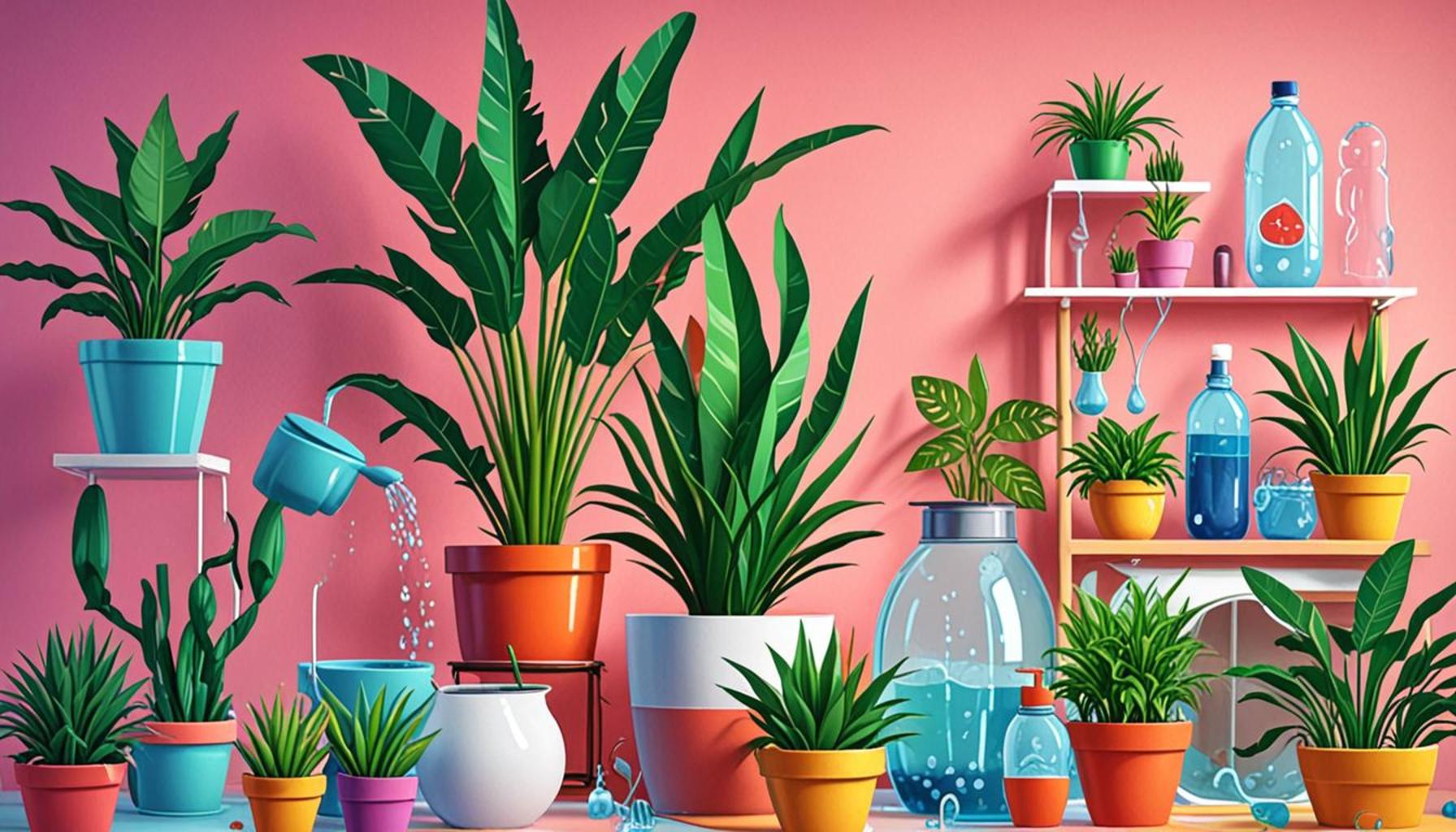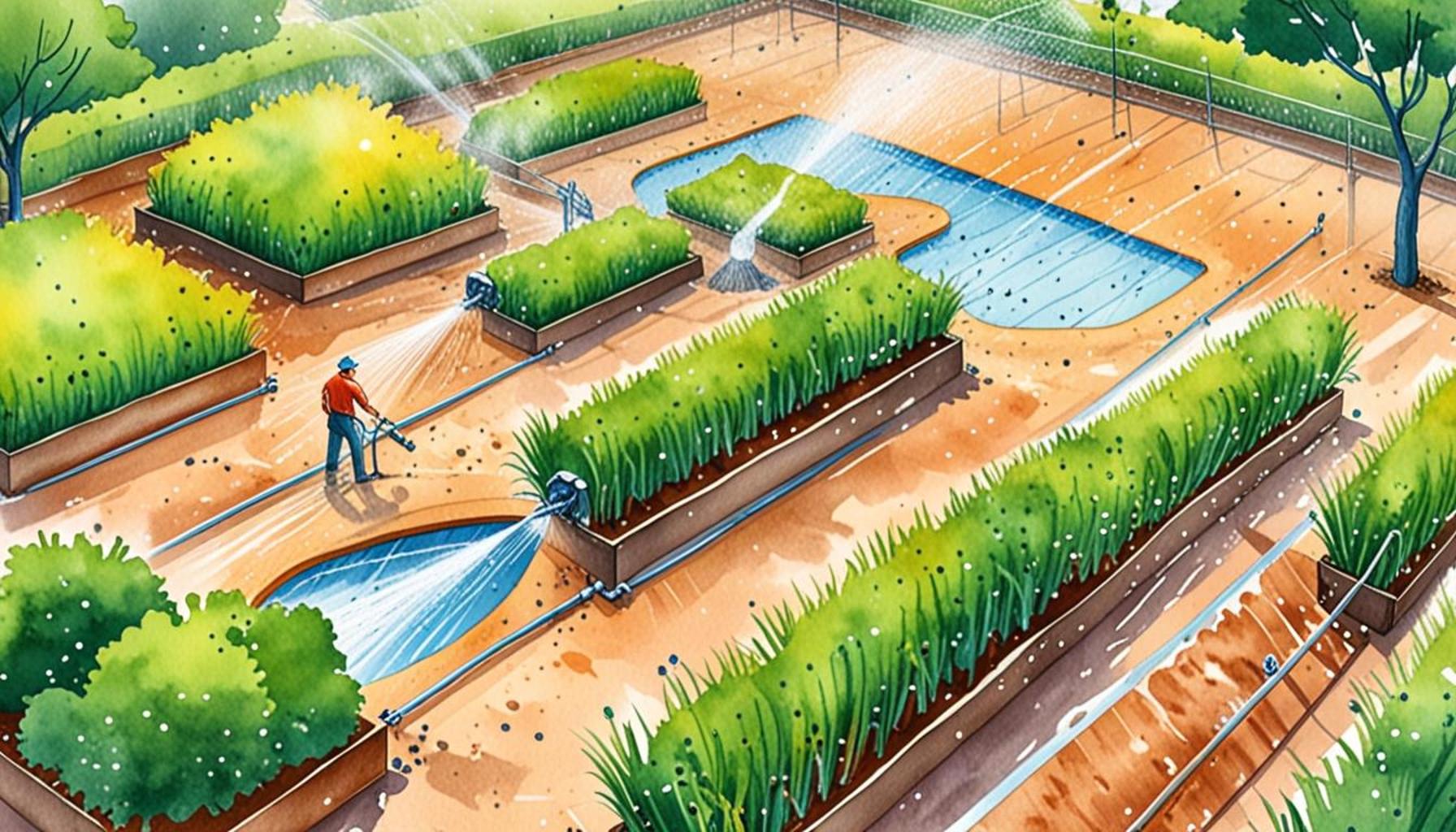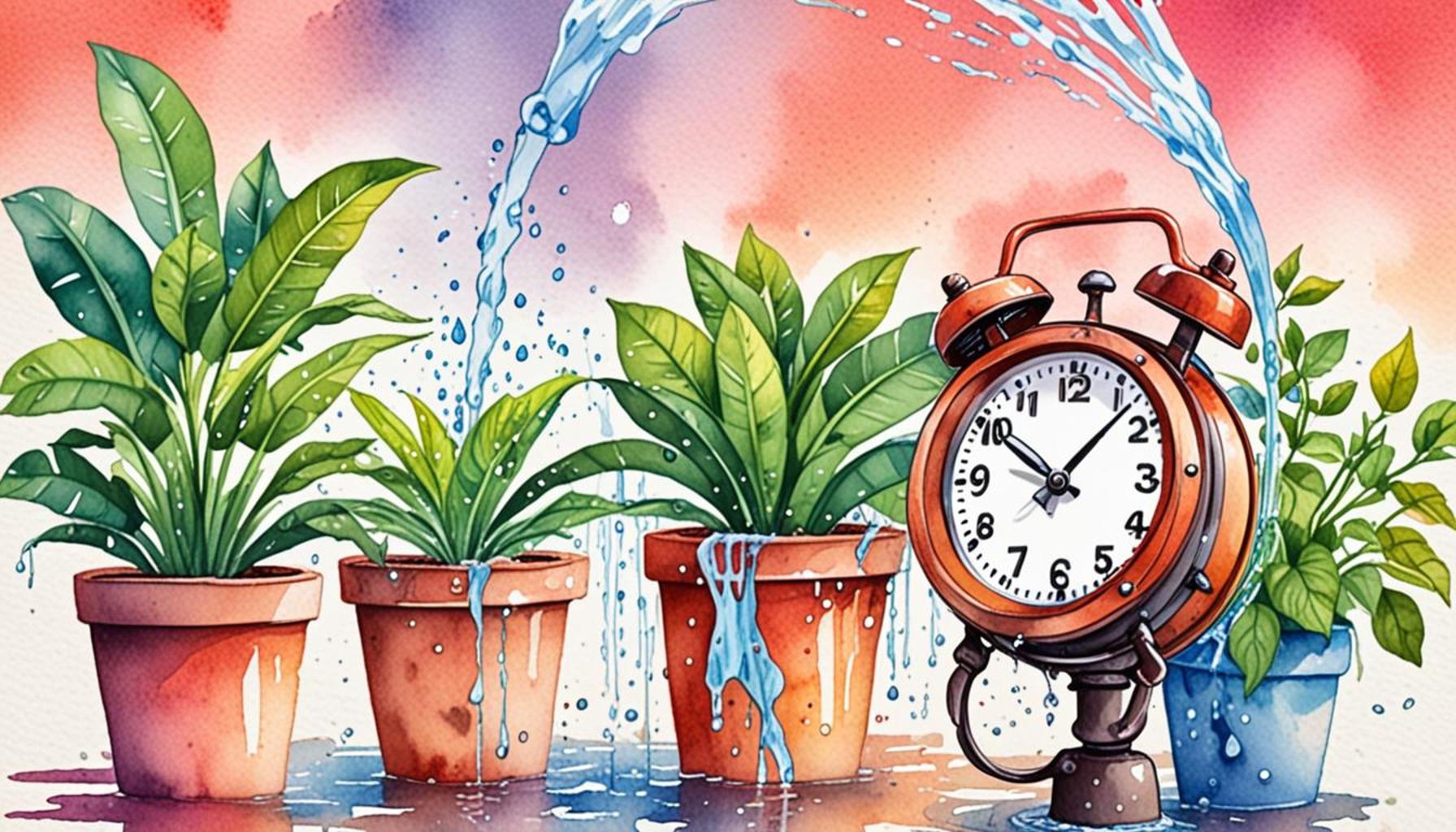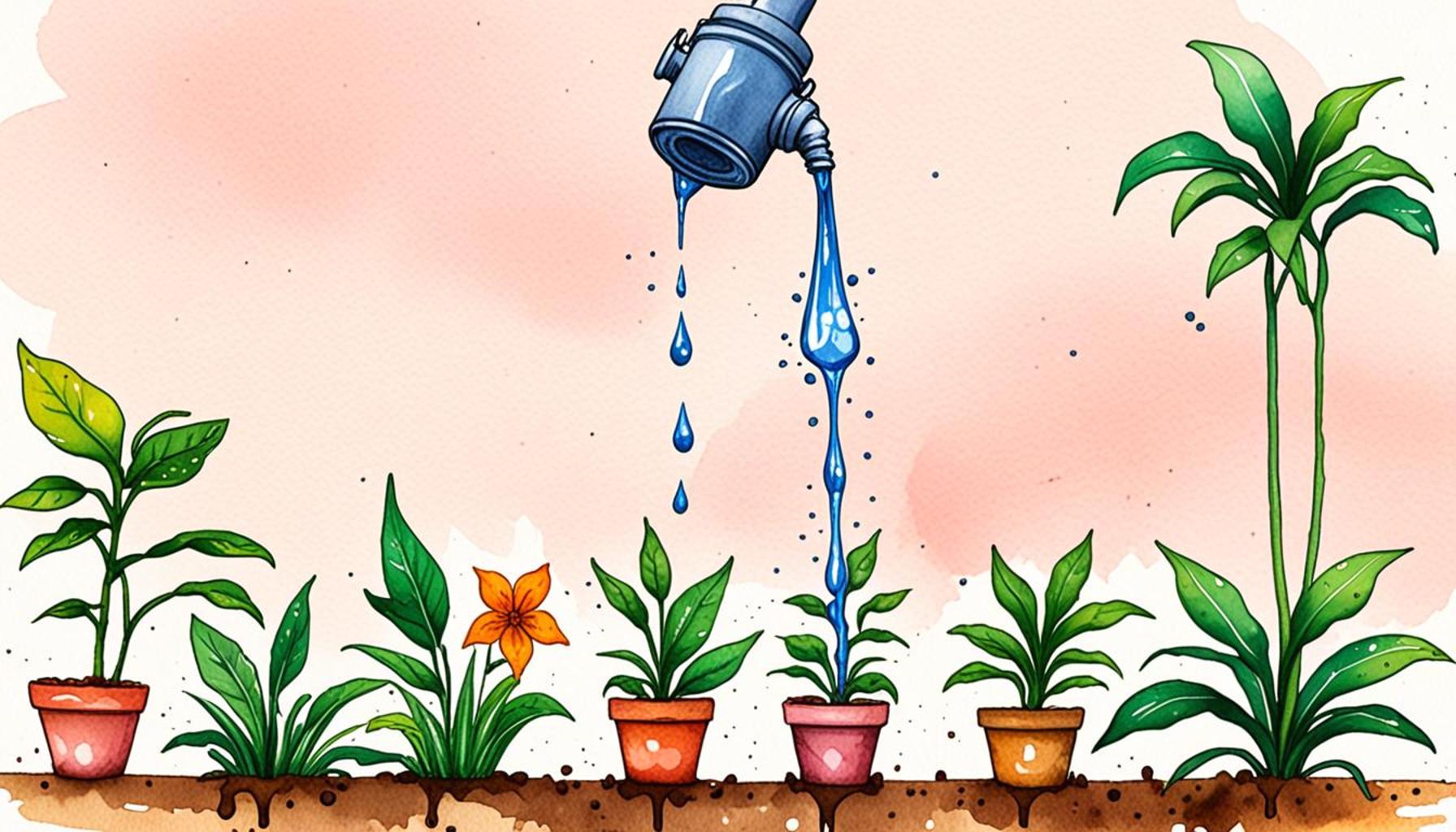How to Choose the Best Type of Water for Your House Plants

Understanding Water Types for House Plants
Nurturing house plants requires attention to detail, and one of the most crucial aspects to consider is the type of water used for watering your greenery. You might think that water is just water, but in reality, different types can significantly impact plant health and growth. When assessing your watering options, it’s essential to delve into the characteristics and suitability of various water types available to you.
Tap Water
Tap water is often the most accessible choice for many Americans, largely due to its convenience and availability. However, it’s important to recognize that this type of water may contain chlorine, fluoride, and other additives that municipal water systems use for purification. While most house plants can tolerate these substances, sensitive species like ferns or certain orchids might react adversely, displaying signs of leaf burn or slowed growth. If you prefer using tap water, consider letting it sit out in an open container for 24 hours, which allows chlorine to dissipate and reduces its concentration.
Distilled Water
For those nurturing delicate plant varieties, distilled water presents an excellent option. This type of water undergoes a purification process that removes impurities, minerals, and chemicals. As such, it’s particularly beneficial for sensitive species that thrive in low-mineral conditions. However, it’s important to remember that while distilled water can prevent toxicity, it lacks essential nutrients. Therefore, you may need to supplement your plants with appropriate fertilizers to ensure they receive a balanced diet.
Rainwater
Harnessing nature’s bounty, rainwater emerges as one of the most favorable choices for indoor gardening. This type of water is typically soft and devoid of salts and chemicals found in tap water, making it ideal for many house plants. Furthermore, rainwater contains naturally occurring nutrients that support healthy plant growth. Collecting rainwater using barrels or containers is an eco-friendly practice that not only benefits your plants but also conserves water resources. Just be cautious of the cleanliness of your collection methods—avoid gathering rainwater that has been contaminated with debris or pollutants.
Spring Water
Spring water is another viable alternative, offering a balance of minerals that can enhance the health of certain species. It’s often bottled and sold in stores and provides a more natural mineral profile, which can be advantageous for lush, thriving foliage. Each brand may differ in mineral content, so it can be effective to explore which types best suit your particular plants.
Ultimately, selecting the right water option involves consideration of factors such as pH level, water temperature, and local water quality. For instance, certain plants prefer slightly acidic conditions, while others flourish in alkaline environments. Understanding the specific needs of your house plants will guide you in making the best choices for their well-being.
Watering plants might seem like a simple task, but taking the time to understand the implications of different water types can lead you to a flourishing indoor garden. Armed with this knowledge, you’re well on your way to creating a vibrant oasis in your home.
LEARN MORE: Click here to discover essential tools for soil preparation
Factors to Consider When Selecting Water for Your House Plants
Choosing the best type of water for your house plants is not merely about convenience; it involves understanding the unique needs of your plants and how different water types can affect their growth and vitality. Here are some critical factors to consider:
Understanding pH Levels
The pH level of water is a significant determinant of nutrient availability for plants. Most house plants thrive in a pH range of 6.0 to 7.0, which is slightly acidic to neutral. Water that is too acidic or alkaline can hinder the plant’s ability to take up essential minerals, leading to nutrient deficiencies. You can easily test your water’s pH level with a simple home testing kit available at gardening stores. If you discover that your tap water is outside the ideal range, consider using distilled or rainwater to create a more favorable environment.
Water Temperature
The temperature of the water can also play a crucial role in how efficiently your plants absorb nutrients. Cold water can shock the roots, while overly warm water may encourage root rot. The ideal practice is to use water that is at room temperature. This not only creates a more natural watering environment but also ensures that nutrients are readily available to the plant.
Local Water Quality
Understanding your local water quality is vital when selecting the best water for your plants. In many areas across the United States, municipal water supplies may contain dissolved minerals, chlorine, or other contaminants that can affect plant health. It’s wise to investigate the specifics of your local water supply. Online resources often provide water quality reports that detail the levels of various substances, allowing you to make informed choices. If your local water is hard or highly chlorinated, consider alternative options, such as spring water or rainwater.
Plant Sensitivity
Different plants have varying levels of sensitivity to water quality, which means it’s crucial to understand the unique needs of your species. Here are some plants that are particularly sensitive to water conditions:
- Ferns: Prefer softer water, like distilled or rainwater, due to their sensitivity to chlorine and fluoride.
- Orchids: Often thrive better with distilled or rainwater, as these options mimic their natural habitats.
- Succulents: Can tolerate tap water but benefit from rainwater due to lower mineral content.
- Peace Lilies: Sensitive to water quality; using filtered or distilled water can help promote healthy growth.
To cultivate a thriving indoor garden, evaluating the type of water you use is crucial. By considering factors such as pH level, water temperature, and local water quality, you will be better equipped to select the most suitable water for your beloved house plants. Remember, the right water choice can not only enhance their growth but also improve the overall health and vitality of your plant collection.
How to Choose the Best Type of Water for Your House Plants
When selecting the best type of water for your houseplants, it’s essential to understand how various water sources differ and how they can impact plant health. There are several key factors to consider, including pH levels, mineral content, and temperature of the water you intend to use.
First, let’s address pH levels. Most houseplants thrive in a slightly acidic to neutral pH range, typically between 6.0 to 7.0. Tap water can vary significantly in pH depending on local water treatment processes; thus, investing in a simple pH testing kit can help you determine if your tap water is suitable. If too alkaline, you may need to amend it with products specifically designed to lower pH levels.
Next, consider the mineral content of your water. Municipality water often contains chlorine or chloramines, which are harmful to sensitive plants. One common solution is to let your tap water sit for 24 hours, allowing chemicals to evaporate. Rainwater is frequently sought after for its nutrient-rich profile with low mineral build-up and is also free of chemicals typically found in tap water.
The temperature of the water is another area to be mindful of. Cold water can shock the roots of your plants, resulting in stunted growth or stress. Room temperature or lukewarm water is generally more suitable for watering during the growth cycle.
Additionally, some enthusiasts recommend using distilled or filtered water, particularly for plants that are sensitive to mineral build-up, such as orchids and carnivorous species. This water type is free from impurities but can lack essential nutrients; therefore, occasionally substituting this water with nutrient-rich alternatives is advisable.
Ultimately, understanding how various water types interact with your houseplants can profoundly impact their growth and vitality. Paying close attention to these elements will allow you to tailor your watering methods effectively and ensure your plants are thriving in their environment. Use the following table for a quick reference on advantages of different water types that can aid in your choice:
| Water Type | Advantages |
|---|---|
| Tap Water | Convenient and readily available; usually contains necessary minerals. |
| Rainwater | Free of chemicals, nutrient-rich, ideal for most plants. |
| Distilled Water | Free from impurities and contaminants; ideal for sensitive plants. |
By evaluating these factors, you will be better equipped to make informed decisions about how to provide the best water for your lovely houseplants, contributing to their health and longevity.
DIVE DEEPER: Click here to brighten your garden
Types of Water and Their Effects on House Plants
Understanding the different types of water available is essential in your quest to choose the best water for your house plants. Each type has unique characteristics that influence plant health and growth. Here, we explore various water types commonly used by plant enthusiasts and how they can impact your indoor garden.
Tap Water
Tap water is easily accessible and often the most commonly used option for watering house plants. However, its suitability can vary widely based on location. While some areas have high-quality tap water that is safe for plants, others may have elevated levels of chlorine and minerals. The presence of chlorine, in particular, can cause leaf tip burn in sensitive plants. For those concerned about these factors, letting tap water sit for 24 hours before use allows chlorine to dissipate, making it less harmful to plants.
Distilled Water
Distilled water is generated through the distillation process, which removes minerals, contaminants, and impurities. This makes it an excellent choice for sensitive species like ferns and orchids, which react poorly to mineral build-up. Using distilled water ensures your plants receive a clean and balanced hydration source. However, regular use might eventually deprive plants of essential minerals found in soil, so it’s wise to alternate with other water sources occasionally.
Rainwater
Rainwater is often considered the best natural choice for house plants. It is free from chemicals and typically has a balanced pH suitable for a broad range of plants. Collecting rainwater can be as simple as using a barrel or bucket outdoors, making it an eco-friendly and cost-effective solution for avid gardeners. Some plants, particularly those native to tropical climates, thrive exceptionally well when watered with rainwater, which mimics their natural environment.
Spring Water
Spring water is sourced from natural springs and is often marketed for human consumption. Similar to distilled water, spring water is filtered and typically has low mineral content. However, it may provide trace minerals beneficial for plant growth, making it a solid choice for those who prefer bottled options. Always check the label to ensure it lacks additives or preservatives, as these can be harmful to plants.
Watering Practices
Beyond the water type itself, watering practices also play a crucial role in plant well-being. Overwatering can lead to root rot and other problems, while underwatering may stress your plants. It’s essential to research the specific watering needs of each plant species and adjust your methods accordingly. Consider using self-watering pots, which can help regulate moisture levels and prevent the pitfalls of over or under-watering.
So, as you navigate the world of house plant care, remember that the type of water you choose can significantly influence your plants’ health and growth. By understanding the distinct characteristics of tap water, distilled water, rainwater, and spring water, you can make informed choices tailored to your plants’ unique preferences. This attention to detail will ultimately elevate your indoor garden experience, leading to lush, thriving greenery throughout your home.
DIVE DEEPER: Click here for essential tools
Conclusion: Elevate Your Plant Care with the Right Water
In conclusion, selecting the best type of water for your house plants is a crucial aspect of ensuring their vitality and growth. With options ranging from tap water to distilled, rainwater, and spring water, understanding the specific characteristics and implications of each type can empower you to make informed choices. Each water source carries its unique potential and pitfalls, that can directly affect your plants’ health. Equipping yourself with knowledge about how elements like chlorine, mineral content, and pH balance work can ultimately help you create an optimal environment for your indoor garden.
Additionally, considering your individual plants’ needs—including their native habitats and water requirements—can enhance your approach to watering. Watering practices are equally important; learning how to avoid over or under-watering can prevent common plant issues such as root rot or wilting. As you embark on this fascinating journey of plant care, don’t hesitate to experiment with different water types and watering methods, as this can lead to revelations about what truly nourishes your greenery.
In the end, the magic of house plant ownership lies in understanding and responding to their needs. From monitoring water quality to observing your plants’ reactions, every effort counts. So whether you’re collecting rainwater or investing in high-quality bottled water, your attention to detail will foster a verdant haven within your home, proving that the best water is the one tailored to meet your plants’ unique needs.


